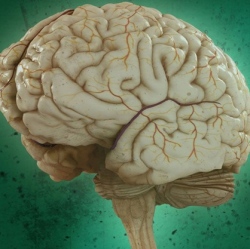
The 2006 discovery that mature skin cells can be converted into stem cells opened up exciting possibilities in regenerative medicine. Now almost a decade later, the Nobel-Prize winning research of Shinya Yamanaka is still opening doors for scientists across different arms of medical research.
In what it labels as a first, a team from the University of North Carolina at Chapel Hill (UNC) has built on this technology to transform adult skin cells into cancer-killing stem cells that seek and destroy brain tumors.
Glioblastomas are the most common and fatal form of brain cancer, carrying a survival rate beyond two years of just 30 percent. While surgeons can remove the tumor, often its cancerous tentacles take root deep in the brain and allow it to grow back. Most patients die within a year and a half of diagnosis.
Radiation and chemotherapy can be used to tackle tumors that cannot be surgically removed, but the UNC research team is working towards yet another treatment that zeroes in on these tentacles as a means of further boosting survival rates.
The team harvested adult skin cells called fibroblasts, which produce collagen and connective tissue, and engineered these to become induced neural stems cells. They then administered these cells to mice, observing that they had the ability to go hunting through the brain for remaining cancer cells and kill them off.
This led to an increase in survival times ranging from 160 to 220 percent, depending on the type of tumor. The team says it is also possible to engineer the stem cells to produce a tumor-killing protein, which would make them an even more potent weapon against cancer.
The team mixed stem cells into an FDA-approved surgical glue, which provided a physical matrix to support them while they sought out the cancerous tentacles. The team is now exploring ways to further improve this staying power, along with the potential to load anti-cancer drugs into the stem cells.
"Our work represents the newest evolution of the stem-cell technology that won the Nobel Prize in 2012," says Shawn Hingtgen, an assistant professor at UNC. "We wanted to find out if these induced neural stem cells would home in on cancer cells and whether they could be used to deliver a therapeutic agent. This is the first time this direct reprogramming technology has been used to treat cancer."
